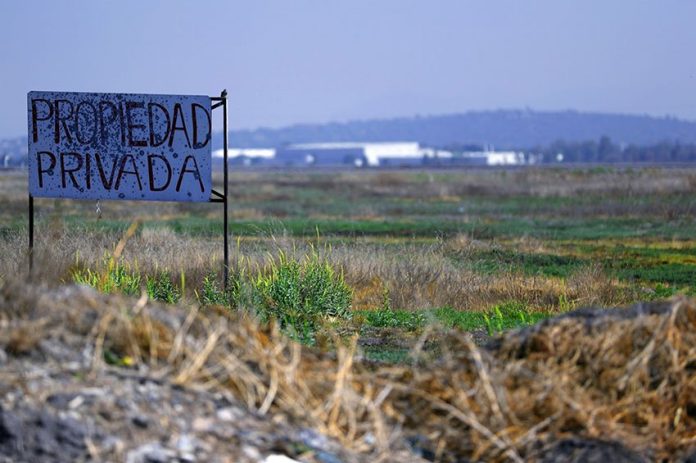The projected cost of the federal government’s airport project in México state has shot up by more than 8 billion pesos mainly due to the presence of a pesky hill less than 10 kilometers from the construction site.
The master plan to convert the Santa Lucía Air Force Base into a commercial airport was presented in August last year, one month after Andrés Manuel López Obrador – who canceled the previous government’s new Mexico City airport project – won the presidential election.
However, the plan has had to be modified due to the close proximity of the 2,625-meter-high Cerro de Paula, according to a Secretariat of Defense (Sedena) report seen by the newspaper El Economista.
The position of the two commercial runways has been changed as a result, which means that several military facilities will have to be relocated. The cost of the changes is estimated to be more than 6.7 billion pesos (US $354.3 million).
The new master plan is being drawn up by French airport operator Aéroports de Paris and is expected to be presented in the second half of the year.
Higher than expected costs to purchase land that will serve as a sound buffer around the airport and to carry out a range of studies have also contributed to the projected cost rising from 70.34 billion pesos (US $3.7 billion) to 78.55 billion pesos (US $4.15 billion), an 11.5% increase.
The federal government has pledged that the new Santa Lucía airport will begin operations in 2021.
It is expected to operate simultaneously with the existing Mexico City airport and that in Toluca – both of which will be upgraded – although some aviation experts have questioned whether that will be viable given their close proximity to each other.
Located in the México state municipality of Zumpango, the Santa Lucía site is 50 kilometers north of Benito Juárez International Airport in the capital and around 100 kilometers northeast of the Toluca International Airport. A new 11.9-billion-peso highway is planned to link the first two airports.
The first stage at Santa Lucía, which will be built by Sedena, includes construction of two runways, a terminal building, a parking lot with space for 4,000 cars, a control tower, a maintenance hangar and a freight terminal, among other facilities.
The airport is planned to eventually have four different passenger terminals and an annual capacity of 100 million passengers.
However, in its first year of operations, it is expected that around 18 million passengers will use the new facility.
Source: Obras (sp)
